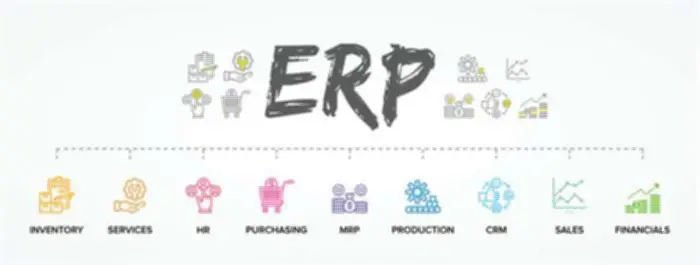What Is Cloud Information Integration: Examples, Tools & Finest Practices
Learn every little thing from the definition of a cloud API to examples of impactful cloud integrations to the benefits these integrations present. A unified API solution offers a single, combination API that lets an organization provide a complete class of integrations, whether or not that’s CRM, HRIS, ATS, file storage, etc. As organizations undertake an ever-growing variety of SaaS purposes, lots of their investments are, in fact, pointless. An worker could additionally be unaware that internal instruments already supply the information and functionality they want simply because these techniques aren’t related cloud integration examples to those utilized by the worker. In the case of internal integrations, your employees now not have to repeat and paste data across purposes or hop between techniques just to search out info. This will save them numerous hours over time, and it’ll enable them to avoid the productiveness drain that comes with reorienting themselves to a model new interface.

Join Our Publication To Get All The Insights On The Data Stack
It empowers you to assemble knowledge from quite a few places into a unified platform, thereby fostering a streamlined information analysis and workflow. You can unlock hidden insights in your data and formulate optimized solutions to build a scalable business model. This level of management is particularly necessary for organizations in sectors with stringent knowledge protection standards. However, this selection requires a dedication to managing and sustaining your IT infrastructure, which may be resource-intensive and may pose challenges for smaller operations. Want a group of confirmed consultants that will assist you deal with your complex software integrations?
How Are Point-to-point Integrations Completely Different From Cloud Integrations?

This permits you to modernize your legacy techniques with out having to fully overhaul them. Vendors provide prebuilt connectors for integrating data sources and analytics techniques. These prebuilt connectors are no-code or low-code options that instantly integrate knowledge from cloud providers, APIs, databases, and varied different sources. For example, Nexla autogenerates knowledge connectors to combine and match information techniques of any kind.
- Once you’ve implemented a cloud integration answer, you’ll want to maintain up it to make certain that it continues to work correctly.
- This pattern demonstrates how to name and invoke a simple REST web service using the Basic Routing integration type.
- After all, clients’ workers are continuously joining and leaving and their roles are often altering in significant ways.
- Tools similar to SAP cloud integration assist join varied purposes in a method that promotes interoperability and permits for automation.
Q What Is Information Integration Within The Cloud?
These steps allow you to load new sample integrations that overwrite previous integration samples with the identical name and model. However, if a sample integration is energetic or locked, it is not overwritten. Learn how the information stack has evolved from on-premise to cloud-based to distributed, and the elements of a modern knowledge stack for efficient knowledge storage and analysis. Learn tips on how to activate knowledge by reversing the normal ETL/ELT process to unlock its full potential and improve customer satisfaction.
Step 3 Built-in System Help And Evolution

Therefore, before performing integration, it is essential to define your aims for data assortment based on your small business wants. This allows you to plan your data motion accordingly and ensure the timely completion of your project. By carefully weighing these choices, you’ll find a way to ensure you choose a cloud integration platform that aligns along with your current operations and helps your future growth ambitions.
Any group that processes data or depends on cloud providers will probably benefit from cloud integration. Cloud integration makes it easier for organizations to mix information from all these different sources. Using cloud integration tools, your group can benefit from improved entry to information, more highly effective and versatile knowledge views, and extra adaptive operations. Cloud software integration refers to the means of connecting completely different software functions. Beyond syncing knowledge, cloud application integration includes connecting application functionalities and workflows as well. For instance, a business might integrate Salesforce with SAP to automate gross sales order transfers immediately from the CRM to the ERP for processing.
While you may not obtain an awesome number of cloud integration requests now, that may quickly change. Given these factors, identifying when applications or features are getting deprecated and responding on time can show troublesome. For the purposes of this article, we’ll cover both forms of cloud-to-cloud integration. We’ll sort out all of these questions head on, however we’ll begin by defining what cloud-to-cloud integration means. New Quantum launch shatters conventional price barriers and empowers all organizations to scale integration across their whole portfolio. ScienceSoft’s consultants and integration architects with 7-20 years of experience can offer you a custom quote for your integration project.
Additionally, a cloud integration software allows you to take on-premise or regionally stored knowledge and automate its addContent to the cloud. Before you choose a cloud data integration platform, ensure your web connection can help it and that it might possibly address a variety of information companies and APIs. No-code cloud knowledge integrations are quicker to arrange and shorten the time to value (TTV) of latest data sources for enterprise intelligence teams. For instance, you can integrate data warehouses, such as AWS Redshift and Google BigQuery, with paperwork stored on Azure Blob Storage or AWS S3.
The cloud is changing the way in which companies function, and these who don’t embrace will in all probability be left behind. If one thing goes wrong together with your system, you’ll need to have the flexibility to get assist from a professional help group. Be positive to research the support choices provided by totally different vendors earlier than making a decision. Once you’ve applied the answer, remember to check it out and make positive that it’s meeting your wants. It could take a while to get every little thing up and running smoothly, however in the long run, it is going to be value it. For occasion, OpenLegacy’s patented know-how connects directly to your on-premises systems一so no need for complicated ESB/SOA middleware.
When implemented properly, integration can automate complicated workflows and cut back or eliminate redundant knowledge that might result in operational errors. Consequently, cloud integration can improve operational efficiency, flexibility and scalability, as well as scale back operational prices. For knowledge integration, cloud integration platforms sometimes use an application-independent knowledge format, corresponding to extensible markup language (XML).
We use sophisticated entry management rules, industry-proven protocols for authentication and authorization, “safer” outbound connections, and extra. Together with the project stakeholders, we resolve on the most feasible option with one of the best strategic potential. Defines non-functional necessities for the integrated system (performance, availability, security, etc.).
Cloud information integration additionally simplifies IT management by permitting the migration of cloud or on-premise data to cloud warehouses and lakes for efficient storage. The main aim of cloud data integration is to arrange, sync, and retailer information in a centralized system. One of the ways to realize this is through the use of CDC functionality, which lets you hold information in sync with the supply techniques, thereby making certain data consistency. Cloud app integration is when you connect and integrate totally different functions, so they can work together (sharing performance and data). Cloud data integration is when you mix data from disparate sources, both in the cloud or on-prem, and consolidate this knowledge into a cloud retailer (like a data warehouse or lake).
They can also retrieve, store, and switch knowledge between completely different databases and functions. The problem with ETL is it’s usually a supply of latency and complexity, particularly if your corporation works with large volumes of data. Alternatively, use an iPaaS platform that may run, automate, and enhance ETL workflows.
Namely, they require technical experience to make use of; they only permit you to build integrations incrementally; they usually fail to offer strong integration management tooling. Taking all of this together, it’s clear that embedded iPaaS tools forestall organizations from scaling and maintaining their integrations effectively. Internal integrations merely check with any integrations you build between the applications your teams use.
By integrating customer information from completely different techniques, businesses can provide a more personalized and streamlined buyer expertise. Common security features for cloud integration embody role-based entry, assist for enterprise authentication instruments like OAuth2, and real-time entry alerts. You additionally need specific API security features, as these are a common source of vulnerability. You want an integration platform that permits you to create, optimize, and handle APIs across on-premise and cloud environments.
Transform Your Business With AI Software Development Solutions https://www.globalcloudteam.com/ — be successful, be the first!
